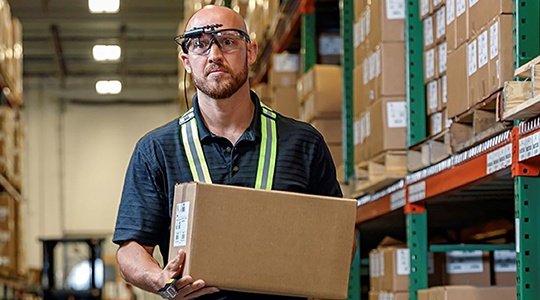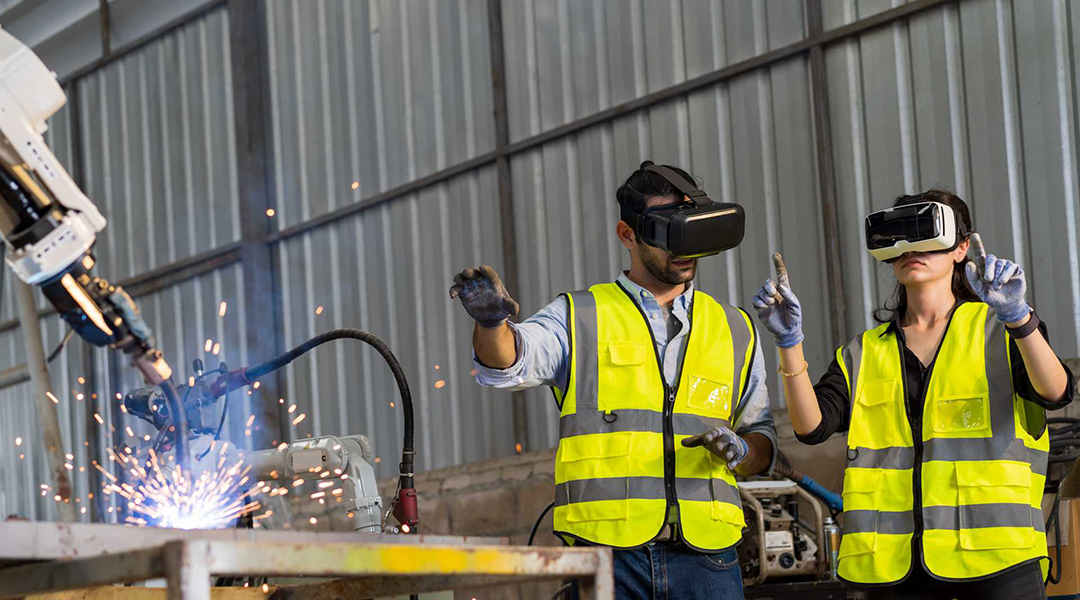Augmented reality (AR) is transforming logistics by boosting efficiency and accuracy. Implementing AR solutions streamlines various processes, such as inventory management, order picking, and warehouse navigation. An augmented reality app development company can create tailored AR applications that enhance real-time data visualization, reduce errors, and improve overall productivity.
Companies adopting AR see significant improvements in operational speed and accuracy. Workers use AR-enabled devices to access crucial information, such as product locations and status updates, without manual input. This seamless integration of digital information into the physical workspace minimizes delays and errors, leading to a more efficient supply chain.
Partnering with an augmented reality app development company ensures customized solutions that meet specific logistical needs. These advanced applications support better decision-making, optimize resource allocation, and enhance worker safety. Embracing AR technology in logistics offers a competitive edge by streamlining operations and ensuring high precision in everyday tasks.
Are you seeking professional assistance with the creation of software for AR in logistics?
Introduction to AR in Logistics
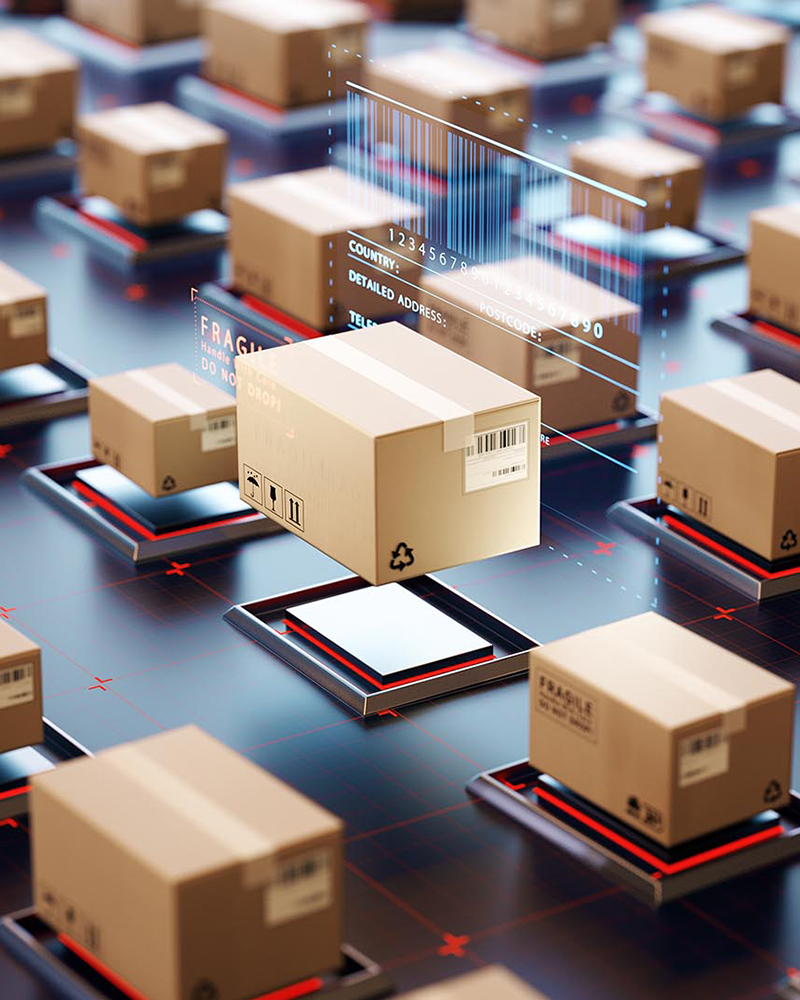
Augmented reality has emerged as a game-changer in logistics, significantly improving efficiency and accuracy. The new reality of AR fashion introduces innovative solutions that streamline various operations within the supply chain. An augmented reality app development company plays a crucial role in creating customized AR applications that enhance logistics productivity.
AR technology is being adopted for inventory management, order picking, and warehouse navigation, allowing workers to access real-time information directly through AR-enabled devices. For instance, using AR glasses, workers can instantly locate items, view stock levels, and receive step-by-step instructions for order fulfillment. This leads to faster processing times and reduced human errors.
Moreover, augmented reality in the food industry exemplifies how AR applications can optimize logistical processes. From tracking perishable goods to ensuring proper storage conditions, AR provides vital data that helps maintain product quality and safety. Companies leveraging AR see significant improvements in operational speed and accuracy, resulting in a more efficient supply chain.
Collaborating with an augmented reality app development company ensures the implementation of solutions tailored to specific logistical needs. These AR applications facilitate better decision-making, optimize resource allocation, and enhance worker safety. Adopting AR technology in logistics not only boosts efficiency but also ensures high precision in daily tasks, providing a competitive edge in the industry.
Defining Augmented Reality
Augmented reality blends digital information with the physical environment, enhancing the user's perception of reality. Unlike virtual reality, which creates a fully immersive digital environment, AR overlays digital elements onto the real world, providing an interactive experience.
In logistics, AR applications are used for real-time data visualization, improving various processes such as inventory management and order fulfillment. Workers equipped with AR devices can access vital information, such as product locations and stock levels, without manual input, streamlining operations and reducing errors.
The new reality of AR fashion extends beyond logistics, impacting industries like the food sector. Augmented reality in the food industry enables better tracking and management of perishable goods, ensuring quality and safety. An augmented reality app development company can develop customized AR solutions tailored to specific industry needs, enhancing overall productivity and accuracy.
In summary, AR technology offers a powerful tool for enhancing logistical operations, providing real-time data, and reducing errors, ultimately leading to a more efficient and accurate supply chain.
The Need for Innovation in Logistics
Logistics demands continuous improvement to meet the challenges of modern supply chains. Augmented reality offers a cutting-edge solution that effectively addresses these demands. By integrating AR technology, companies can streamline operations, reduce errors, and enhance overall efficiency.
An augmented reality app development company can create applications tailored to specific logistics needs, enabling workers to access real-time information directly through AR devices. This access to instant data, such as product locations and stock levels, accelerates processes and minimizes human errors.
Augmented reality marketing further amplifies the benefits of AR in logistics. Companies can showcase their advanced logistical capabilities to potential clients, highlighting the efficiency and precision gained through AR technology. This not only improves operational performance but also attracts new business opportunities. Adopting AR in logistics ensures that companies stay ahead in a competitive market, leveraging technology to improve speed, accuracy, and overall productivity.
Applications of Augmented Reality in Logistics
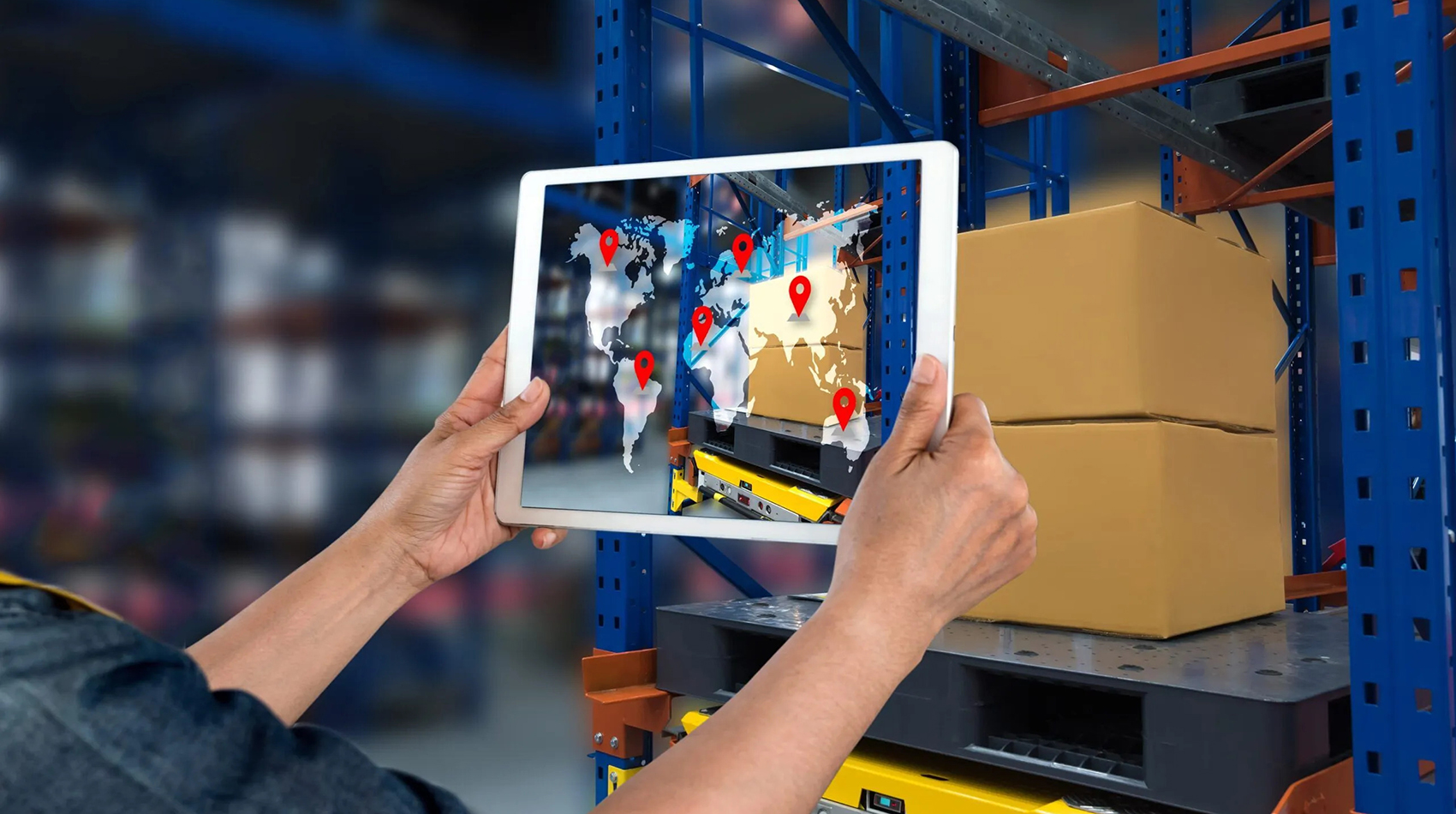
Augmented reality transforms logistics through several practical applications. Warehouse management, transportation, and inventory control benefit significantly from this technology. Workers equipped with AR devices access real-time information, streamlining operations and reducing errors. Implementing AR enhances efficiency, accuracy, and productivity in logistics processes.
An augmented reality app development company provides tailored solutions for specific industry needs. These applications optimize logistics, ensuring seamless digital data integration into physical tasks. AR's impact on logistics is profound, offering tangible improvements across various operations.
1. Warehouse Management and Operations
Warehouse management experiences significant enhancements with augmented reality technology. AR devices, such as smart glasses, provide workers with real-time data, streamlining operations and reducing errors. For example, workers can view detailed picking instructions overlaid on their field of vision, ensuring precise item selection and placement.
Using AR, warehouse managers can optimize space utilization by visualizing storage layouts and identifying the best locations for inventory. This results in improved organization and quicker retrieval of items. Additionally, AR can facilitate equipment maintenance by providing step-by-step repair instructions, minimizing downtime.
An augmented reality app development company customizes AR applications to address specific warehouse needs, enhancing overall productivity. AR technology supports training new employees by offering interactive, hands-on guidance, reducing the learning curve. Real-time data access and visualization streamline warehouse operations, boosting efficiency and accuracy.
Incorporating AR in warehouse management leads to better space utilization, reduced errors, and enhanced employee performance. As logistics continues to evolve, AR remains a critical tool for optimizing warehouse operations and maintaining a competitive edge.
2. Transportation and Delivery
Augmented reality technology greatly benefits transportation and delivery processes. AR applications provide real-time route optimization, ensuring timely and efficient deliveries. Drivers equipped with AR-enabled devices receive dynamic navigation assistance, adjusting routes based on traffic conditions and delivery priorities.
AR enhances vehicle maintenance by offering interactive diagnostic tools and repair instructions. This proactive approach reduces downtime and extends vehicle lifespan. Additionally, AR applications can assist in loading and unloading operations by providing precise visual cues, ensuring optimal space utilization, and reducing the risk of damage.
An augmented reality app development company tailors AR solutions to meet specific transportation needs, improving overall efficiency. AR technology also enhances driver training by simulating real-world scenarios and providing interactive feedback, accelerating the learning process.
AR's real-time data visualization improves decision-making, leading to more efficient transportation and delivery operations. By integrating AR into logistics, companies achieve faster delivery times, reduced operational costs, and higher customer satisfaction. AR technology is indispensable for modern transportation and delivery, offering tangible benefits across the supply chain.
3. Inventory Management
AR technology is making remarkable improvements in inventory management. AR applications enable workers to access real-time inventory data, streamlining tracking and management processes. Using AR devices, employees can quickly locate items, verify stock levels, and update records without manual input.
AR technology reduces human errors by providing visual guidance for inventory tasks, such as counting and sorting items. This ensures higher accuracy and efficiency in inventory management. Additionally, AR can facilitate cycle counting by overlaying digital information onto physical inventory, simplifying the process.
An augmented reality app development company creates customized solutions that address specific inventory challenges. AR applications optimize warehouse layouts, suggesting the best storage locations for items based on demand and turnover rates. This results in better organization and faster retrieval of inventory.
Incorporating AR in inventory management leads to more accurate tracking, reduced errors, and improved operational efficiency. By leveraging AR technology, companies can maintain optimal inventory levels, reduce carrying costs, and enhance overall productivity. AR's impact on inventory management is substantial, providing a clear advantage in today's competitive logistics landscape.
Benefits of Implementing AR in Logistics
Augmented reality offers significant benefits in logistics by enhancing productivity, safety, and cost efficiency. Companies using AR experience streamlined operations, reduced errors, and faster processes. Real-time data access improves decision-making and operational accuracy. Partnering with an augmented reality app development company ensures tailored solutions that meet specific logistical needs, providing a competitive edge.
Increased Productivity and Efficiency
Augmented reality significantly boosts productivity and efficiency in logistics. Workers equipped with AR devices receive real-time instructions and data overlays, speeding up tasks like order picking and inventory management. For instance, AR glasses can guide employees through warehouses, displaying optimal routes and item locations. This minimizes search time and reduces human error.
AR technology also facilitates quicker onboarding of new employees. Interactive, hands-on training through AR applications accelerates learning, reducing the time needed to reach full productivity. Experienced workers benefit from continuous access to updated information, allowing them to perform tasks more efficiently.
An augmented reality app development company can create customized solutions that integrate seamlessly with existing systems, ensuring maximum operational efficiency. By providing instant access to crucial data and streamlining workflows, AR helps companies achieve higher throughput and better resource utilization, leading to faster order fulfillment, improved customer satisfaction, and a more competitive position in the market.
Enhanced Safety and Accuracy
Augmented reality enhances safety and accuracy in logistics operations. AR devices provide real-time alerts and instructions, helping workers avoid hazards and follow safety protocols. For example, AR glasses can highlight dangerous areas in a warehouse, ensuring employees remain vigilant and avoid accidents.
Accurate data overlays reduce the likelihood of errors in tasks like picking and packing. Workers see detailed instructions and visual cues, which guide them through complex processes. This precision reduces the risk of mistakes, ensuring orders are correctly fulfilled and inventory is accurately managed.
Maintenance tasks also benefit from AR technology. Step-by-step visual guides assist workers in performing equipment repairs and inspections, reducing downtime and preventing malfunctions. An augmented reality app development company can tailor these applications to address specific safety and accuracy challenges, enhancing overall operational reliability.
By improving safety measures and minimizing errors, AR technology creates a more secure and efficient working environment. This not only protects employees but also ensures high-quality service delivery, reinforcing the company's reputation for reliability.
Cost Savings and Competitive Advantage
Implementing augmented reality in logistics leads to substantial cost savings and a competitive advantage. AR technology streamlines operations, reducing the time and resources required for tasks like inventory management and order fulfillment. This efficiency translates into lower labor costs and higher throughput.
AR applications help minimize errors, which can be costly in terms of both time and money. Accurate data overlays guide workers through processes, reducing the likelihood of mistakes and the need for rework. This accuracy ensures better inventory control, reducing losses from misplaced or miscounted items.
An augmented reality app development company can design solutions that enhance resource utilization, leading to more efficient operations. For example, AR can optimize warehouse layouts and storage, maximizing space and improving workflow. This optimization reduces overhead costs and increases overall productivity.
The competitive advantage gained through AR implementation is significant. Companies leveraging this technology can offer faster, more reliable services, attracting more customers and increasing market share. By staying ahead of technological trends, businesses can differentiate themselves from competitors, ensuring long-term success and profitability.
Overcoming the Challenges of AR Adoption
Adopting augmented reality in logistics requires addressing integration, user training, and data privacy concerns. Solutions must ensure seamless system compatibility and secure data handling.
Integration with Existing Systems
Successful integration of augmented reality with existing logistics systems is crucial. Compatibility with current software and hardware ensures a smooth transition. An augmented reality app development company can create solutions that integrate seamlessly with warehouse management systems, transportation management software, and other logistical tools.
Critical steps for successful integration include:
- Assess current systems. Evaluate existing software and hardware to identify compatibility requirements.
- Develop custom APIs. Create interfaces that facilitate seamless data exchange between AR applications and existing systems.
- Plan phased implementation. Roll out AR solutions in stages to minimize disruptions and allow for adjustments.
- Conduct regular testing. Ensure continuous compatibility and functionality through frequent testing and updates.
Proper planning and collaboration with IT departments ensure minimal disruption during the integration process. Regular testing and updates maintain system compatibility and functionality. Overcoming integration challenges enables logistics companies to fully leverage the benefits of augmented reality, improving efficiency and productivity.
User Adoption and Training
Encouraging user adoption and providing practical training are essential for maximizing the benefits of augmented reality in logistics. Clear communication about AR technology's advantages and functionalities helps gain employee buy-in. Demonstrating how AR simplifies tasks and enhances productivity can motivate workers to embrace the new technology.
Comprehensive training programs ensure that employees are comfortable using AR devices. Hands-on sessions, guided tutorials, and continuous support help workers gain confidence in operating AR tools. Tailored training materials addressing specific job roles ensure relevance and practicality.
An augmented reality app development company can offer customized training solutions, including interactive simulations and real-time feedback. Regular training updates keep employees informed about new features and best practices. Effective user adoption and training minimize resistance, ensuring a smooth transition and optimal use of augmented reality in logistics.
Data Privacy and Security Concerns
Addressing data privacy and security concerns is critical when implementing augmented reality in logistics. AR devices often access and transmit sensitive information, requiring robust security measures. Encryption protocols ensure that data remains secure during transmission and storage.
Access controls and authentication mechanisms prevent unauthorized use of AR applications. Implementing multi-factor authentication adds an extra layer of security, ensuring that only authorized personnel can access sensitive data. Regular security audits and updates help identify and mitigate potential vulnerabilities.
An augmented reality app development company can design solutions with built-in security features, adhering to industry standards and regulations. Employee training on data privacy practices ensures that workers handle information responsibly. Addressing privacy and security concerns builds trust, facilitating the successful adoption of augmented reality in logistics.
The rise of augmented reality in entertainment highlights the growing importance of secure, user-friendly AR applications across various industries. Ensuring robust data privacy and security measures in logistics paves the way for safe and effective AR adoption.
Case Studies and Success Stories of Augmented Reality in Logistics
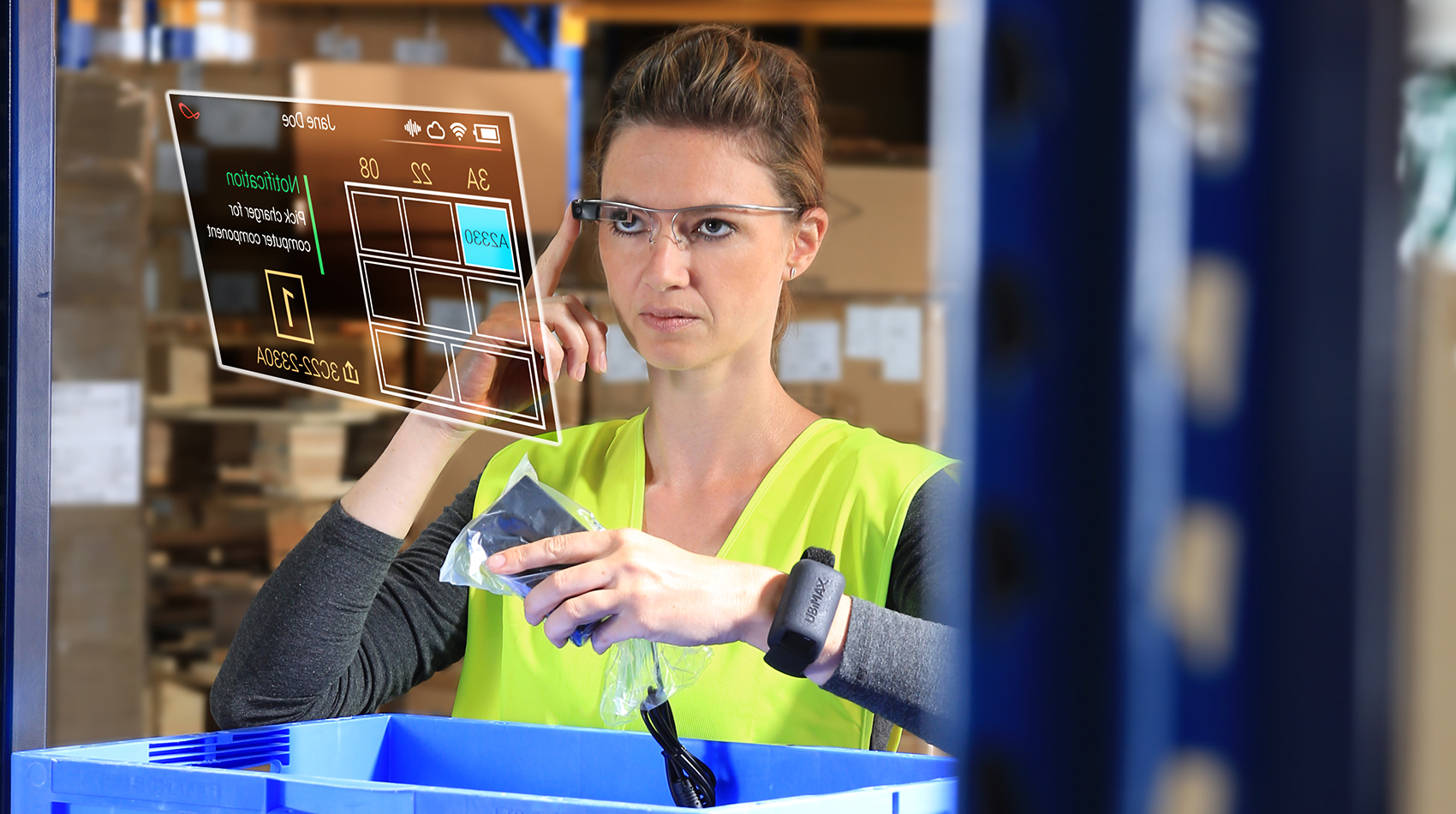
Numerous logistics companies have successfully implemented augmented reality to enhance their operations. These case studies demonstrate significant improvements in efficiency, accuracy, and cost savings. By examining these examples, other organizations can better understand the potential benefits and practical applications of augmented reality in logistics.
Industry Leaders Leveraging AR in Logistics
Industry leaders like DHL and KNAPP AG have pioneered using augmented reality in logistics. DHL has integrated AR into its warehousing operations, significantly enhancing efficiency and accuracy. Using AR glasses, workers receive real-time instructions for picking and packing, which reduces errors and speeds up the process. DHL reported that AR could reduce warehouse costs by at least 25%, highlighting the substantial financial benefits of this technology.
Another example is BMW, which has incorporated AR into its logistics operations. During a two-month study, BMW observed a 22% time savings and a 33% reduction in errors over an eight-hour shift by using AR technology. Such an approach improved operational efficiency and enhanced the accuracy of order picking and overall workflow.
XPO Logistics also demonstrates the effective use of AR. By displaying diagrams and essential information directly in the workers' field of vision, AR has helped reduce errors and improve the efficiency of picking and collecting goods. The integration of AR has streamlined various processes, highlighting its significant impact on operational performance.
These examples illustrate how leading companies leverage augmented reality to improve logistics operations substantially, offering valuable insights for other organizations considering AR adoption.
Start gaining more profit from our AR solutions in logistics.
Pushing the Boundaries of AR Tech in Logistics
Augmented reality is redefining logistics, driving unprecedented efficiency and precision. Companies are increasingly leveraging AR to enhance various operations, from inventory management to delivery processes. By integrating AR, logistics firms can streamline workflows, reduce errors, and boost productivity, setting new industry standards and maintaining a competitive edge.
Augmented Reality in Logistics and Industry 4.0
Industry 4.0 emphasizes digital transformation in manufacturing and logistics, with augmented reality playing a crucial role. AR provides real-time data overlays and interactive interfaces, significantly enhancing operational efficiency. For instance, AR-enabled devices guide workers through warehouses with visual instructions, reducing errors and speeding up tasks.
Key benefits include:
- Real-time data access. Instantly available information improves decision-making and reduces delays.
- Enhanced accuracy. Visual guidance minimizes mistakes in tasks such as picking and sorting.
- Improved training. Interactive AR modules shorten onboarding times and enhance skill acquisition.
Integrating augmented reality in logistics aligns perfectly with Industry 4.0 objectives, fostering more agile and responsive supply chains. AR enhances decision-making and operational efficiency by providing real-time data and interactive guidance. The seamless integration of digital tools and physical operations reduces errors, speeds up processes, and improves overall productivity.
AR's ability to deliver precise, up-to-date information ensures that logistics operations are more adaptable to changes and demands. This synergy between AR and Industry 4.0 principles results in streamlined workflows, optimized resource use, and a robust, future-ready logistics framework.
Potential for Widespread Adoption
The potential for widespread adoption of augmented reality in logistics is vast. Leading companies have showcased the effectiveness of AR in enhancing operational performance.
Key factors driving adoption include:
- Cost efficiency. AR reduces operational costs by minimizing errors and accelerating processes.
- Scalability. AR solutions can be scaled from small warehouses to large distribution centers.
- Enhanced productivity. AR-equipped workers perform tasks more efficiently, increasing throughput and optimizing resource use.
As the benefits become more apparent, more logistics companies are expected to adopt AR, driving significant improvements in efficiency, accuracy, and overall industry performance.
How to Navigate the Integration of AR in Logistics
Integrating augmented reality in logistics requires a strategic and methodical approach. To ensure successful adoption, follow these steps:
Step 1: Identify Key Areas for AR Integration
Begin by analyzing your logistics operations to pinpoint areas that can benefit most from AR. Focus on processes like inventory management, order picking, and delivery optimization. Companies such as DHL have successfully used AR to enhance warehouse efficiency by providing real-time visual instructions to workers, which reduces errors and speeds up tasks.
Step 2: Develop a Strategic Implementation Plan
Create a detailed plan that outlines objectives, targeted AR technologies, and expected outcomes. Ensure the plan aligns with your broader business strategies. Address specific operational challenges and set clear goals for what AR technology should achieve in your logistics operations.
Step 3: Collaborate with AR Solution Providers
Partner with experienced AR solution providers who understand logistics. These collaborations are crucial for selecting the right technologies and ensuring seamless integration. For example, TeamViewer’s AR Warehouse solutions demonstrate how to integrate AR effectively by providing digital overlays that guide warehouse staff to the correct products.
Step 4: Conduct Pilot Projects
Implement pilot projects to test AR solutions in a controlled environment. Using these pilots to gather data and feedback will help refine the technology before full-scale deployment. For instance, XPO Logistics conducted a successful AR pilot that improved picking accuracy and reduced errors.
Integrating AR in logistics promises significant improvements in efficiency and accuracy, aligning with Industry 4.0's goals. By following these steps, logistics companies can effectively incorporate AR technology, leading to streamlined operations and a competitive advantage in the market.
How Program-Ace Can Help you With AR in Logistics
Program-Ace is an experienced software development service provider specializing in augmented reality solutions for logistics. Our expertise ensures seamless integration of AR technology into your logistics operations, enhancing efficiency and accuracy.
Why choose Program-Ace:
- Custom solutions. Tailored AR applications designed to meet your specific logistics needs.
- Proven experience. Successful projects with industry leaders demonstrate our capability and reliability.
- Comprehensive support. From initial consultation to deployment and maintenance, we provide end-to-end service.
Our AR solutions streamline warehouse management, optimize inventory processes, and improve delivery accuracy. Partnering with us gives you access to cutting-edge technology and expert guidance, ensuring a smooth transition and maximum benefit from AR integration.
Don't hesitate to contact us to learn how our AR solutions can transform your logistics operations and give you a competitive edge. Reach out for a consultation and discover the potential of augmented reality with Program-Ace.
